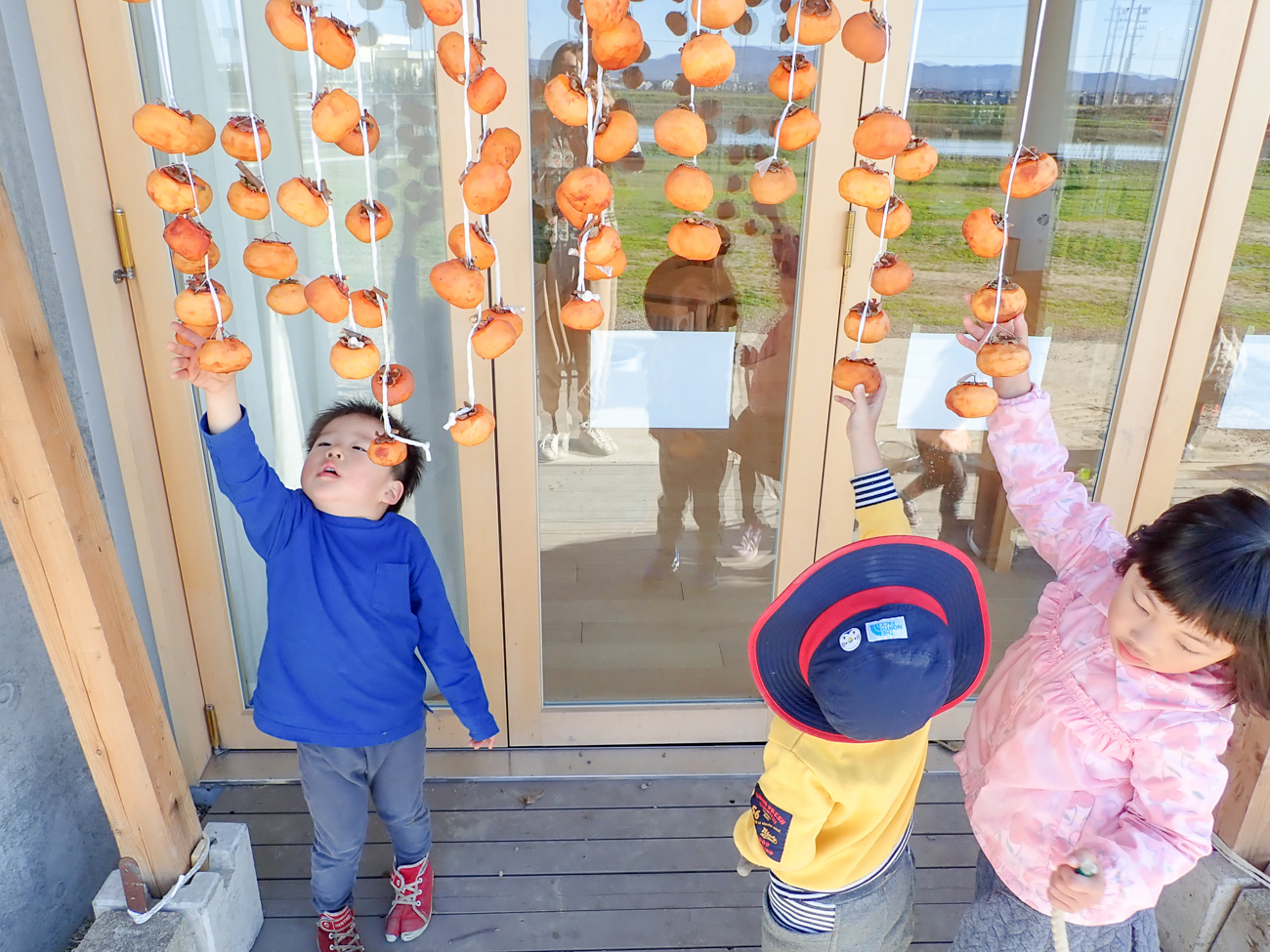
2018.12.15 It all began from the sour persimmons
Text : Chihiro Taniguchi
“To come to realise the sense of connection with nature by preparing and eating homemade food” has been the aim for Akebi class in November -so we were all delighted when our cook Yoshiko san and a boy’s family brought us plenty of shibugaki (sour persimmons) to nursery! Time to prepare DIY dried persimmons!
Day1 ― Preparation
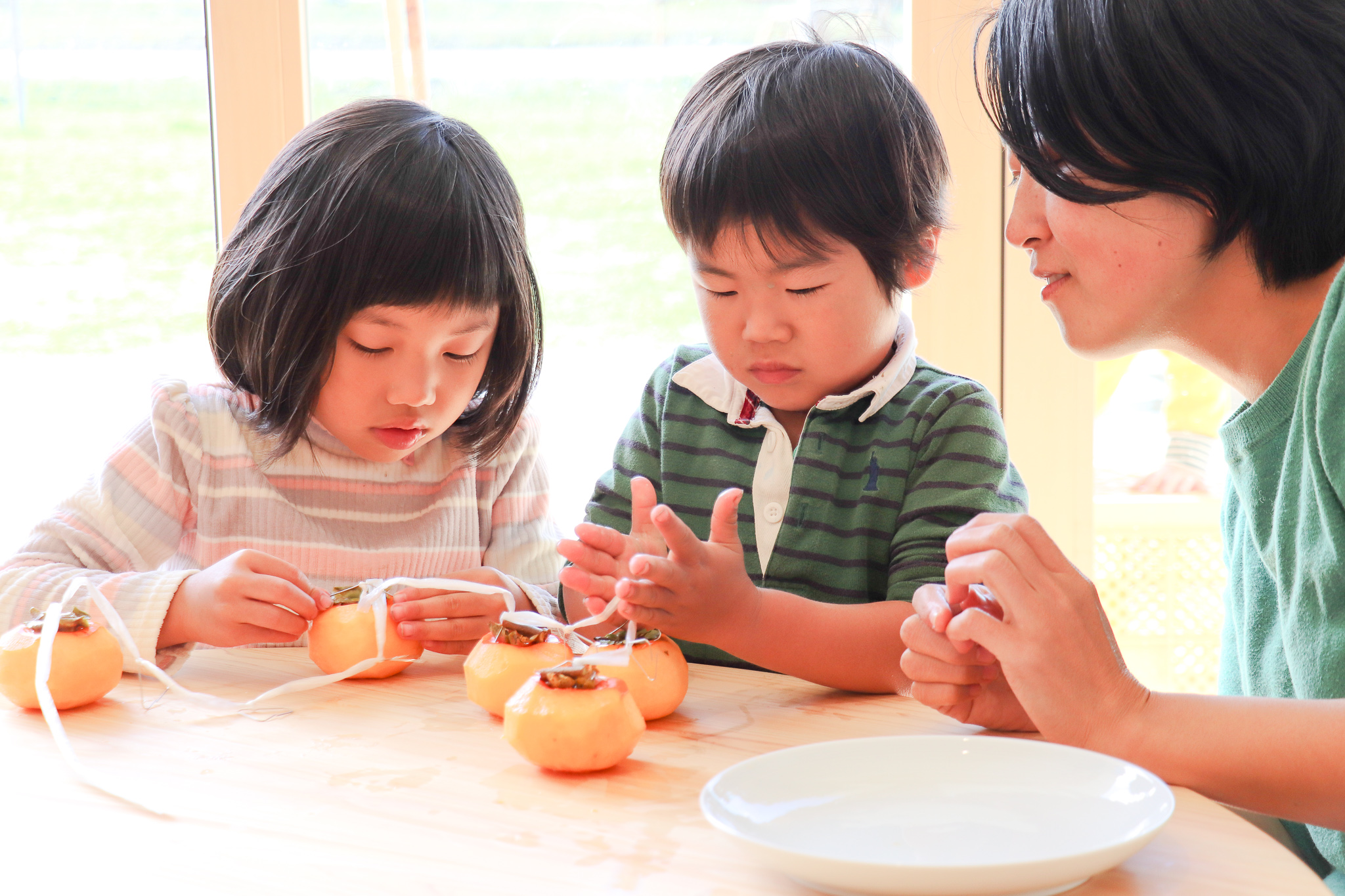
All the children watched H-san and the boy’s mum peeling persimmons playfully, their eyes with an appealing look of “I want to do it too!”. In fact, their job for this activity was as follows: [1. put the fruit in hot water for 5 seconds ]→[2. spray shochu onto fruit]→[3. put them on laundry clips]. What a hard work to be done for all the persimmons we have! Some children couldn’t help but take a bite -soon their faces crumpled with bitterness, but this has motivated the others to do the same…and snap! Everybody had the same expressions. Whilst experiencing bitterness, 50 sour persimmons were finally prepared for hanging outside to dry by the volunteers, taking part when they are down to help.
Under the blue sky the persimmons were hung on a rod -the children looked up and screamed “Wooow! Look at that!”. It has probably been the feeling of great accomplishment! The contrast between blue sky and orange persimmons was also quite breathtaking.
Day2―New findings
A few days later, the children see the change in the dried persimmons. “Oh wow! It’s sticky!” “It’s squishy!” -realisations through touching. The other kid calls out, “The colour has changed!” -it’s realisations through seeing. From this dialogue, some children began to question “why dry it up? And till when?”. The others respond, “maybe because it was wet?” There were many “?”’s towards the “drying” part.
Day3―Deciding the price
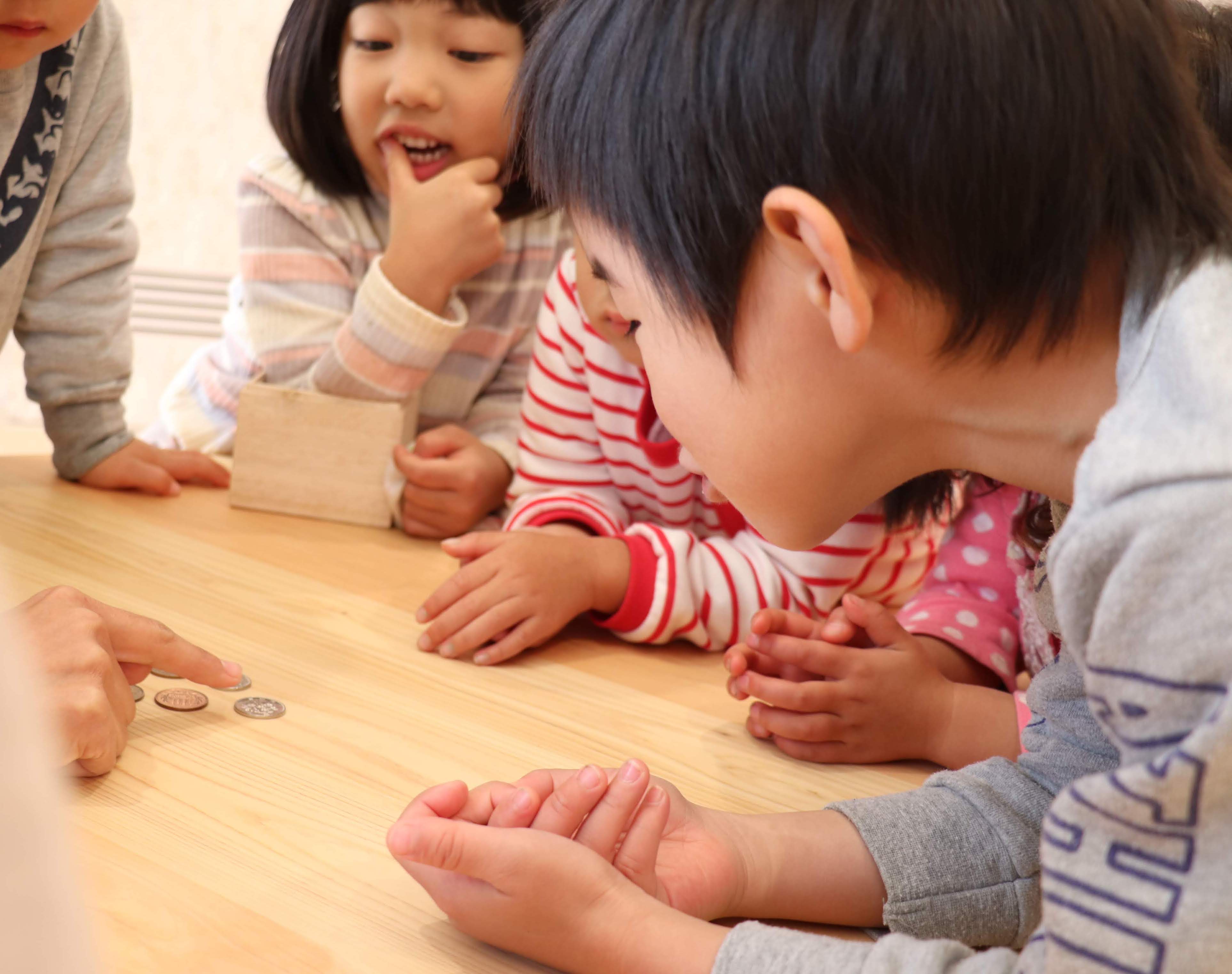 Playground at SORAI survives through all the daily rainfalls and storms -the persimmons outside also had to survive through it all, but this harsh climate might have done good to them to change the colours in only 3 weeks! We have decided to try them; the children looked too excited to eat when removing the fruit from the strings. When they took a bite everybody went “Yummy!!” and “Okawari (one more!)!” non-stop! We ate and ate but there were so many that we ended up discussing what to do with all the dried persimmons left.
Playground at SORAI survives through all the daily rainfalls and storms -the persimmons outside also had to survive through it all, but this harsh climate might have done good to them to change the colours in only 3 weeks! We have decided to try them; the children looked too excited to eat when removing the fruit from the strings. When they took a bite everybody went “Yummy!!” and “Okawari (one more!)!” non-stop! We ate and ate but there were so many that we ended up discussing what to do with all the dried persimmons left.
The staff members originally had the idea of selling them at Yamanoko Marche on 12/9 -but the children had something different in their minds; they wanted to share the persimmons with the other classes! Not only in SORAI but also “to Yamanoko Home friends!”. We were extremely happy to discover that the children see two Yamanokos as one! The class all agreed to share the persimmons, buT problem was there were far too many left even after we give them away. As a result we decided to sell the rest at Yamanoko Marche.
The next discussion is what the price for one dried persimmon should be. The children call out “10,000 yen!” “5 yen!” “1 yen!”. Our staff members also gave a little lecture on the role of “money” by showing some coins on the table -explaining how you are able to buy something different after the dried persimmons turn into money. It was fascinating for us to see how the class tried to think hard on what money can do, and state their opinions. In the end, we developed from a boy’s claim (“I want it to be 30 yen! I can’t think of any other price!”) and asked to everybody, “what about any price is okay beyond 30 yen?” which all class agreed on. Our class discussion on price decision ended in a success.
Day4 ― Getting ready for Marche
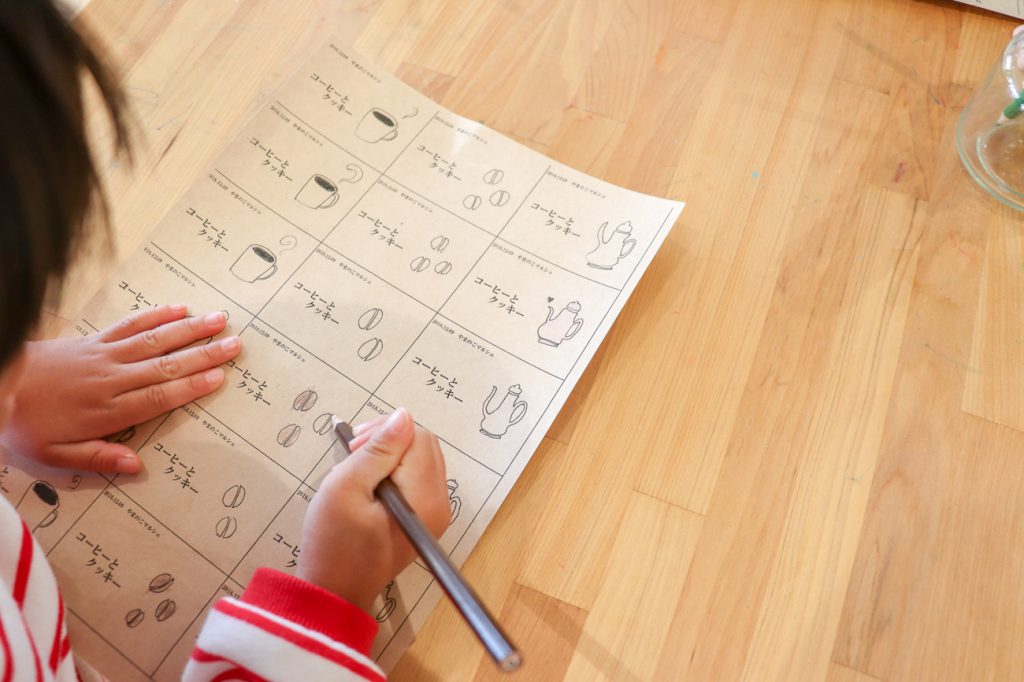
Since a few months before, playing shopkeepers and customers had been one trend at Akebi class. This kind of “pretend plays” had significantly been day by day at Akebi, which had been a pleasure to observe for staff members.
The whole class have started to prepare for Marche from 2 weeks before, based on our intention to “have real shopkeepers at the event, not ‘play’”. Decorating tickets as “paint and colour” actiVity, designing the shop sign taking a hint from curiosity towards letters, and the “Kids Coffee Stand” project sprung from daily coffee mill project. All the preparation work was the pure elaborated form of daily class actiVities. Yamanoko is where “daily living” happens -there was no need for special preparation.
Day5ーSellling the persimmons
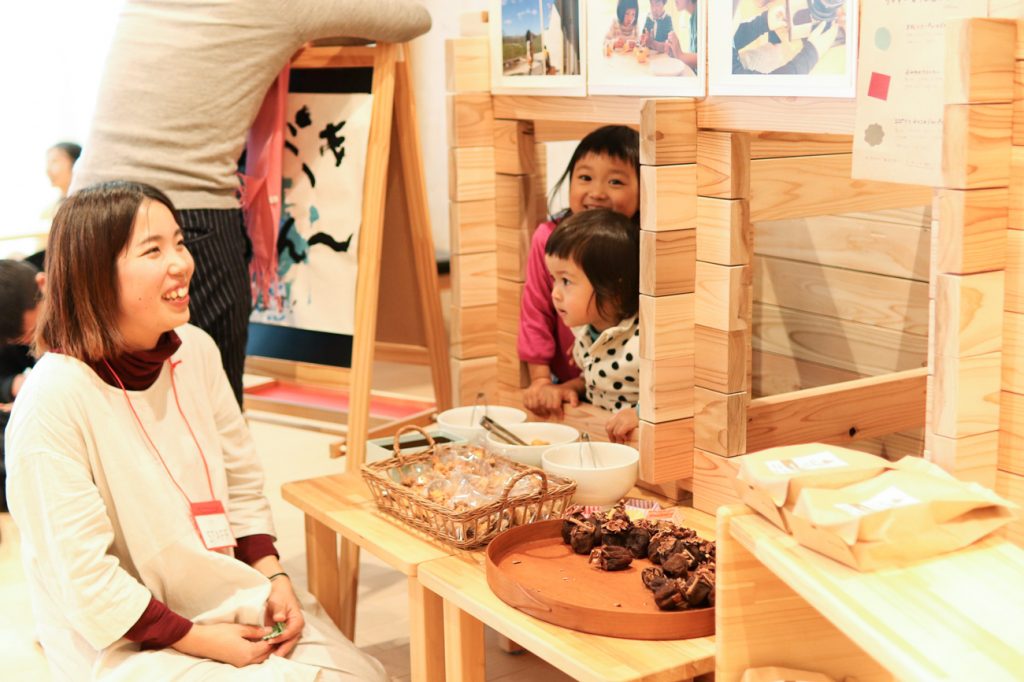
On the day, a few members from Akebi class took turns at the stall, calling out “Hello please come and have a look!” “Irasshaimasee! (How can I help you?)” from the stall made out of their all time favourite wooden bricks.The children seemed very satisfied to experience to use the tickets designed by them, and the whole procedure of the exchange of homemade persimmons and money. Even a few days after the event, they often bring on about their experience as shopkeepers saying “It was so fun!” “So many customers came” “We gave them our persimmons didn’t we?”. The feel that they have inVited customers themselves is a great accomplishment for the class. Now, we are currently planning to discuss on what to do with the sales -let’s see what consequences come up!













 PREV
PREV